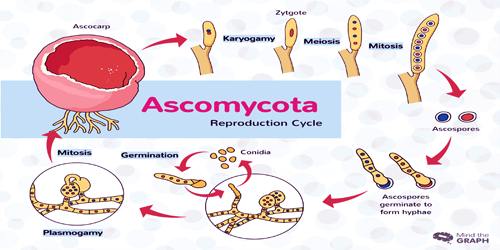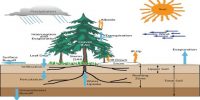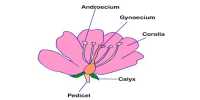Ascomycota is a phylum of the fungi state and, combined with Basidiomycota, forms the sub condition for diarrhea. Ascomycota, also called sac fungi, is a fungal film (Kingdom Fungi) characterized by a sacral national structure, ascus, which contains four to eight ascospores at the sexual stage. Its members are commonly known as sack fungi. They are the largest fungi film with over 64,000 species. The defining feature of this fungus group is “ascus” (in Greek (askos), meaning “sac” or “wineskin”), a microscopic sexual structure in which nonmotile spores known as ascospores are formed. However, some species of Ascomycota are miraculous, meaning that they do not have a sexual cycle and thus do not produce SC or ascospores. Previously placed on deuteromycota with other fungal taxa, the asexual ascomycetes are now characterized and classified by phylogenetic analyzes of DNA sequences on the basis of morphological or physiological similarities with taxa bearing Ascus. Psychodynamic markings of the majority of lichen (less commonly known as “ascolicin”), such as Cladonia, include Ascomycota.
The sac fungus is grown on the SC alone or carried in one of several different fruit structures, or ascospores, and the ascospores are subdivided based on the method of discharge. Many ascomycetes are plant microbes, some are pathogens of organisms, some are edible mushrooms, and many are living in dead organic matter (as saprobes). Asexual (or anamorphic) ascomycetes, formerly with other fungal taxa in Duteromycota, are now characterized and classified on the basis of morphological or anatomical similarities to Ascus-bearing taxa and by phylogenetic analysis of DNA sequences. Other ascomycetes include important plant pathogens, such as grape powdery mildew (Ansinula nectar), Dutch elm disease (Ophiostoma ulmi), chestnut blight (Cryphonectaria parasitic) and apple scab (Venturia inequalis). Some special uses of ascomycetes as raising the incredibly common conditions for bread, alcoholic beverages and cheese counseling for antibiotics. There are many plant-pathogenic ascomycetes, including apple scabs, rice blasts, ergot fungi, black knots, and powdered millipedes. Several species of ascomycetes are biological model organisms in laboratory studies. Examples of ascomycetes are antibiotic manufacturers for the treatment of cheese and bacterial infectious diseases of the Penicillium species.
Many ascomycetes are pathogens, both humans and plants, including animals. Examples of ascomycetes that can cause infections in humans include Candida albicans, Aspergillus niger, and decades of species that cause skin infections. The most famous Neurospora crassa, several species of yeast and Aspergillus species, are used in many genetics and cell biology studies. Examples of taxa included Ascomycota are antibiotic manufacturers for the treatment of Penicillium species and bacterial infectious diseases on cheeses.













